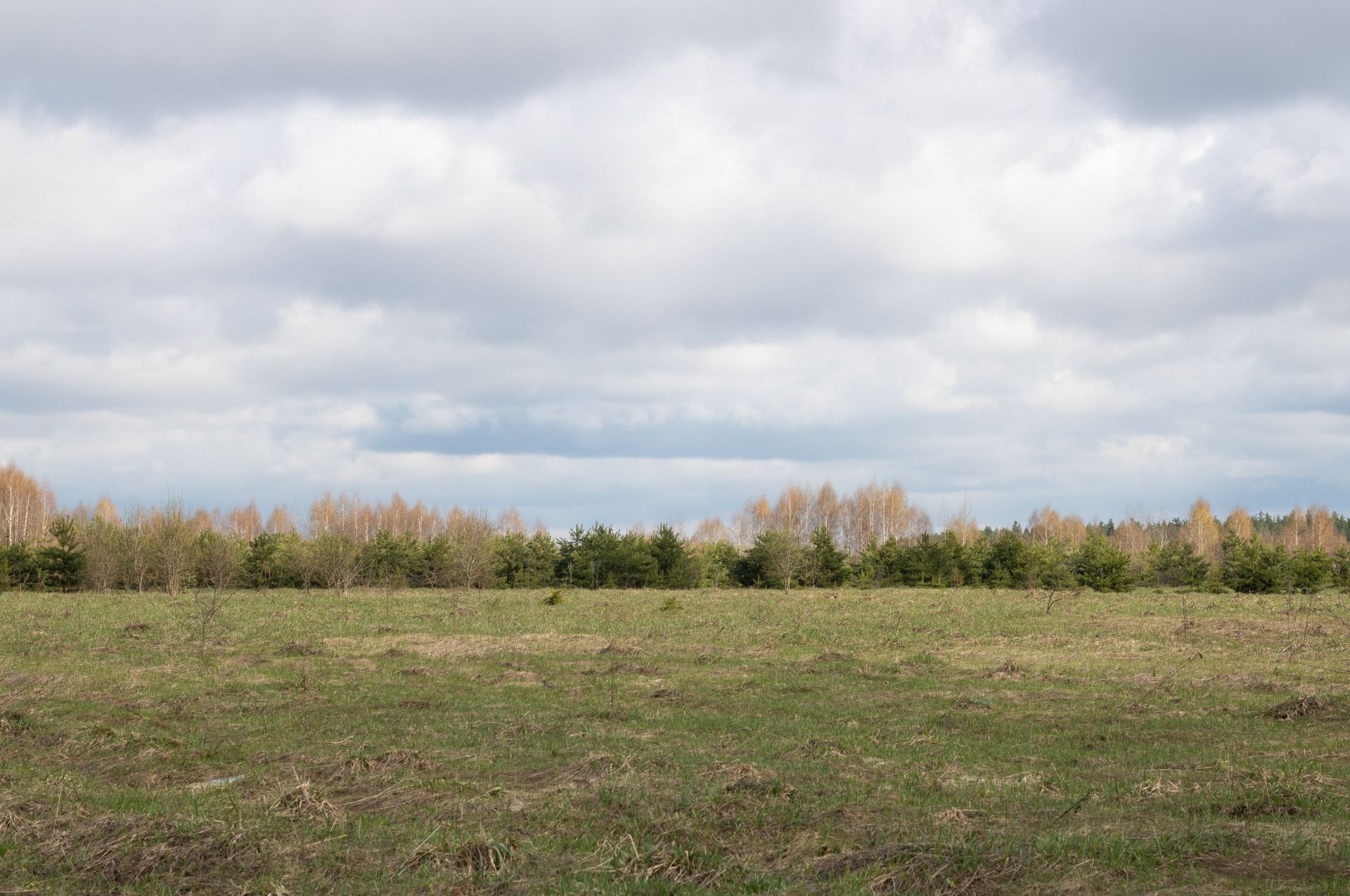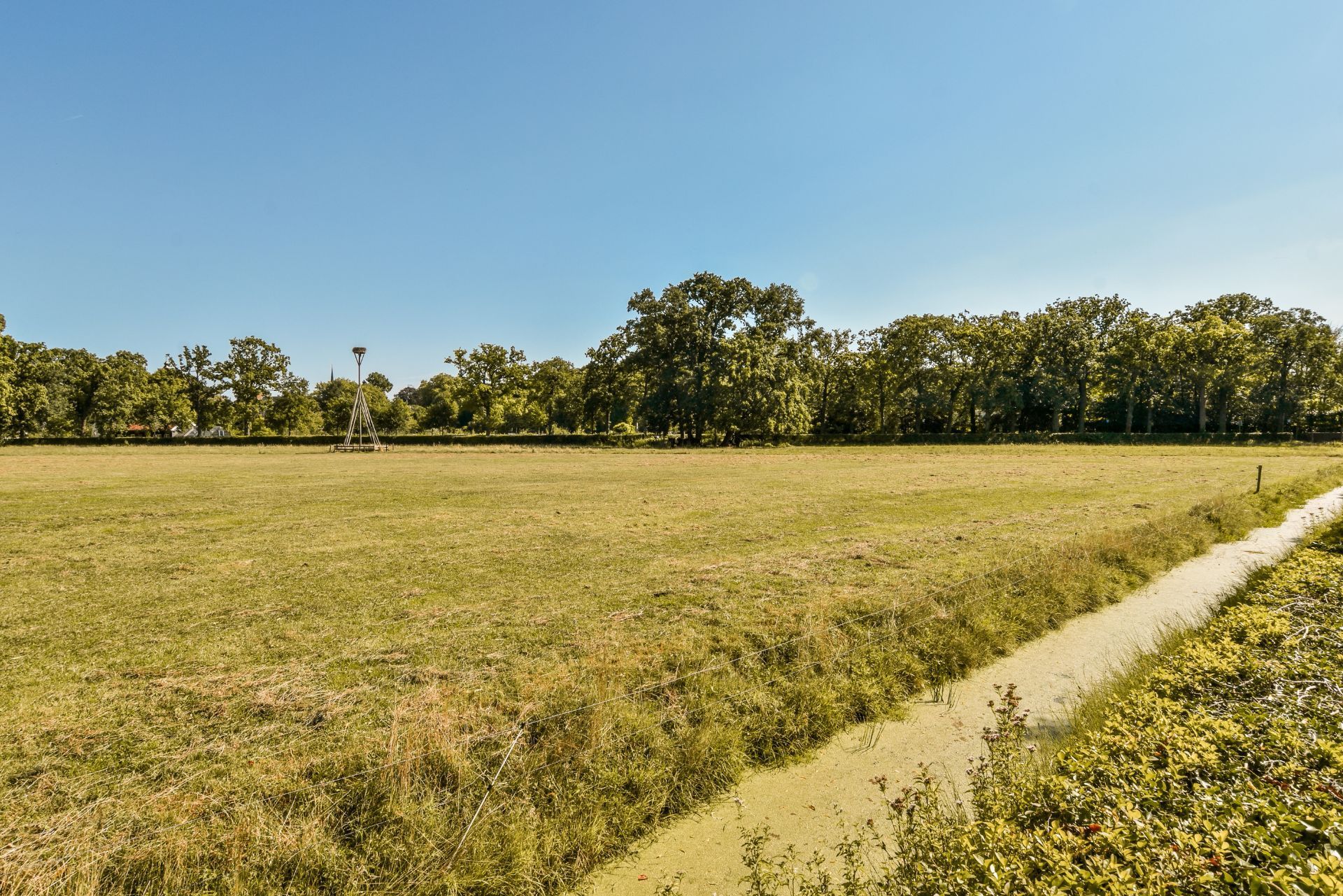
Top 3 Recommended Policies
Owning vacant land in Connecticut can be a rewarding investment, but it also comes with its own set of challenges and risks. One of the most important aspects of protecting that investment is understanding vacant land insurance. This article will explore the ins and outs of vacant land insurance in Connecticut, covering everything from what it is and why it’s important, to the types of coverage available and how to choose the right policy.
What is Vacant Land Insurance?
Vacant land insurance is a specialized type of insurance designed to protect landowners from various risks associated with owning undeveloped property. Unlike traditional homeowners insurance, which covers structures and personal property, vacant land insurance focuses on the unique challenges posed by owning land that is not currently being used for residential or commercial purposes.
This insurance typically covers liability risks, such as injuries that occur on the property, as well as potential environmental hazards. It is essential for landowners to understand the specific coverage options available to them to ensure they are adequately protected. Policies can vary significantly, so it’s advisable for landowners to consult with insurance professionals who can tailor coverage to meet their specific needs and circumstances.
Why is Vacant Land Insurance Important?
Investing in vacant land can be a lucrative venture, but it also comes with inherent risks. Without proper insurance coverage, landowners may find themselves facing significant financial burdens in the event of an accident or unforeseen circumstance. For instance, if someone gets injured on your property, you could be held liable for medical expenses and legal fees.
Moreover, vacant land can be susceptible to environmental issues, such as contamination or natural disasters. Vacant land insurance helps mitigate these risks, providing peace of mind to landowners who may not be actively using their property. In addition to liability and environmental coverage, some policies may also offer protection against vandalism or theft, which can be particularly relevant for remote or less-frequented parcels of land. Understanding these additional coverage options can further enhance the security of your investment, ensuring that you are prepared for any potential challenges that may arise.
Furthermore, vacant land insurance can be a critical component in the overall strategy for land development. Many landowners plan to build or develop their properties in the future, and having the right insurance in place can facilitate financing and development approvals. Lenders often require proof of insurance before they will issue loans for development projects, making vacant land insurance not just a protective measure, but also a strategic asset in the land development process. By securing adequate coverage, landowners can confidently move forward with their plans, knowing they have a safety net in place should any issues arise during the development journey.

Types of Coverage Available
When exploring vacant land insurance, it is crucial to understand the different types of coverage that may be available. Each type of coverage addresses specific risks and can be tailored to meet the unique needs of the landowner.
Liability Coverage
Liability coverage is one of the most critical components of vacant land insurance. This coverage protects landowners from legal claims arising from injuries or accidents that occur on their property. For example, if a visitor slips and falls while exploring the land, liability coverage can help cover medical expenses and legal fees.
It is essential to assess the level of liability coverage needed based on the property's accessibility and potential for visitors. Higher traffic areas may require more substantial coverage to protect against potential claims. Additionally, landowners should be aware of local laws and regulations that may influence liability exposure, such as the duty of care owed to trespassers versus invited guests. Understanding these nuances can help landowners make informed decisions about their insurance needs.
Property Damage Coverage
While vacant land may not have structures, property damage coverage can still be relevant. This type of coverage protects against damage caused by natural disasters, vandalism, or other unforeseen events. For instance, if a storm causes significant erosion or damage to the land, this coverage can help offset repair costs.
Landowners should consider the specific risks associated with their property when determining the amount of property damage coverage needed. Factors such as location, topography, and proximity to natural hazards can all influence the level of coverage required. Furthermore, understanding the history of the land, including any previous claims or incidents, can provide valuable insight into potential vulnerabilities that should be addressed through adequate insurance.
Environmental Coverage
Environmental coverage is another essential aspect of vacant land insurance, especially for properties that may have been previously used for industrial or agricultural purposes. This coverage protects against potential contamination issues that could arise from hazardous materials or pollutants on the land.
Landowners should conduct thorough assessments of their property to identify any potential environmental risks. In some cases, obtaining environmental coverage may be a requirement for securing financing or permits for future development. Moreover, it's advisable for landowners to stay informed about local environmental regulations and potential liabilities associated with land use. Engaging with environmental consultants can provide deeper insights into the land's history and help in formulating a comprehensive risk management strategy that includes necessary coverage options.
Factors Affecting Vacant Land Insurance Costs
The cost of vacant land insurance can vary significantly based on several factors. Understanding these factors can help landowners make informed decisions about their insurance policies and budget accordingly.
Location of the Property
The location of the vacant land plays a crucial role in determining insurance costs. Properties situated in areas prone to natural disasters, such as floods or wildfires, may incur higher premiums due to the increased risk. Additionally, urban areas with higher population densities may also see elevated insurance costs due to the potential for liability claims. For instance, a plot of land in a coastal region may face higher rates due to the risk of hurricanes and storm surges, while land in a mountainous area may be more susceptible to landslides or avalanches. Insurers often conduct thorough risk assessments based on geographical data to evaluate these potential hazards.
Size and Use of the Land
The size of the property and its intended use can also impact insurance premiums. Larger parcels of land may require more coverage, leading to higher costs. Furthermore, if the land is being held for future development, insurers may assess the potential risks associated with construction and development activities. For example, land designated for commercial use might attract higher premiums compared to residential plots, as commercial developments often involve more complex liability issues and regulatory compliance. Additionally, the presence of any structures, such as fences or outbuildings, can influence the insurance calculation, as these features may increase the risk profile of the property.
Claims History
A landowner's claims history can significantly influence insurance premiums. If a property has a history of liability claims or environmental issues, insurers may view it as a higher risk and adjust the premiums accordingly. Conversely, a clean claims history can lead to lower insurance costs. Insurers typically evaluate not only the frequency of past claims but also their severity and nature. For instance, multiple claims related to trespassing or vandalism may raise red flags for insurers, prompting them to increase premiums. Additionally, landowners can often mitigate costs by implementing safety measures or maintaining the property, which can demonstrate a proactive approach to risk management and potentially lead to discounts on their insurance policies.
How to Choose the Right Vacant Land Insurance Policy
Selecting the right vacant land insurance policy is crucial for protecting your investment. Here are some key considerations to keep in mind when evaluating potential policies.
Assess Your Coverage Needs
The first step in choosing a policy is to assess your specific coverage needs. Consider factors such as the property's location, intended use, and any potential risks associated with the land. This assessment will help determine the types and levels of coverage required to adequately protect your investment. For instance, if your land is situated in a flood-prone area, you may need additional flood insurance to safeguard against natural disasters. Similarly, if you plan to develop the land in the future, you might want to consider coverage that includes liability protection during the construction phase.
Compare Multiple Quotes
Obtaining quotes from multiple insurance providers is essential for finding the best policy at the most competitive price. Each insurer may offer different coverage options and premium rates, so it is vital to compare these factors carefully. Look for policies that provide comprehensive coverage while remaining within your budget. Additionally, pay attention to the deductibles associated with each policy, as a lower premium may come with a higher deductible, which could impact your out-of-pocket expenses in the event of a claim. It’s also wise to read reviews and seek recommendations to gauge the reliability of the insurance companies you are considering.
Consult with an Insurance Agent
Working with an experienced insurance agent can be invaluable when navigating the complexities of vacant land insurance. An agent can help identify potential risks, recommend appropriate coverage options, and guide you through the application process. Their expertise can ensure that you make informed decisions and secure the best policy for your needs. Moreover, a knowledgeable agent can assist in understanding the fine print of your policy, including any exclusions or limitations that could affect your coverage. This personalized guidance can prove essential, especially for first-time landowners who may be unfamiliar with the intricacies of insurance policies.
Understand the Policy Terms
Once you have narrowed down your options, take the time to thoroughly read and understand the terms of each policy. Look for details regarding the coverage limits, exclusions, and any additional endorsements that may be available. Some policies may offer optional coverage for specific risks, such as vandalism or theft, which could be particularly relevant depending on the land's location and usage. Understanding these terms will help ensure that you are fully aware of what is covered and what is not, allowing you to make a more informed decision. Additionally, be sure to inquire about the claims process; knowing how to file a claim and what documentation is required can save you time and frustration later on.

Common Misconceptions About Vacant Land Insurance
There are several misconceptions surrounding vacant land insurance that can lead to confusion among landowners. Understanding these misconceptions can help clarify the importance of obtaining proper coverage.
“I Don’t Need Insurance Because I’m Not Using the Land”
One of the most common misconceptions is that vacant land does not require insurance because it is not actively being used. However, even if the land is not being developed or occupied, risks such as liability claims and environmental issues still exist. Without insurance, landowners could face significant financial repercussions. For instance, if someone were to trespass on the property and injure themselves, the landowner could be held liable for medical expenses or damages, leading to costly legal battles. Additionally, issues like erosion, flooding, or contamination can arise unexpectedly, and without coverage, the financial burden of remediation could fall entirely on the owner.
“Homeowners Insurance Covers Vacant Land”
Another misconception is that homeowners insurance automatically covers vacant land. While some homeowners policies may provide limited coverage for vacant properties, they typically do not offer the comprehensive protection needed for undeveloped land. It is essential to obtain a separate vacant land insurance policy to ensure adequate coverage. This specialized insurance can address unique risks associated with vacant land, such as vandalism, theft of materials, or damage from natural disasters. Moreover, landowners should be aware that many standard homeowners policies have specific exclusions for vacant properties, meaning that if a claim were to arise, it could be denied based on the policy’s terms.
“Insurance is Too Expensive”
Many landowners may believe that vacant land insurance is prohibitively expensive. While costs can vary based on several factors, there are often affordable options available. By comparing quotes and working with an insurance agent, landowners can find a policy that fits their budget while providing necessary coverage. Additionally, factors such as the location of the land, its size, and the potential risks associated with it can all influence the premium. Some landowners may also qualify for discounts if they bundle their vacant land insurance with other types of coverage or if they have a good claims history. Understanding these nuances can help landowners make informed decisions about their insurance needs.
Steps to Take After Purchasing Vacant Land Insurance
Once a vacant land insurance policy is in place, there are several important steps landowners should take to ensure they remain protected and informed about their coverage.
Review Your Policy Regularly
Insurance needs can change over time, so it is essential to review your policy regularly. This includes assessing whether the coverage limits are still adequate based on any changes to the property or its intended use. Regular reviews can help identify any gaps in coverage that may need to be addressed. Additionally, consider discussing your policy with your insurance agent to ensure you fully understand the terms and conditions, as well as any potential exclusions that may affect your coverage.
Keep Records of Property Conditions
Maintaining detailed records of the property's condition can be beneficial in the event of a claim. Take photographs and document any changes or improvements made to the land. This information can help substantiate claims and ensure that you receive the appropriate compensation if an issue arises. It is also wise to keep a log of any maintenance or inspections performed on the property, as this can demonstrate your diligence in preserving its value and safety over time.
Stay Informed About Local Regulations
Local regulations regarding land use and development can change, impacting insurance needs and coverage. Staying informed about any changes in zoning laws or environmental regulations can help landowners make proactive decisions regarding their property and insurance coverage. Engaging with local planning boards or attending community meetings can provide valuable insights into upcoming developments that may affect your land. Furthermore, subscribing to local newsletters or online forums dedicated to land use can keep you updated on relevant issues and opportunities that may arise in your area.
Consider Future Development Plans
If you have plans to develop the vacant land in the future, it is crucial to consider how these plans might affect your insurance needs. For instance, if you intend to build structures or make significant improvements, you may need to adjust your policy to reflect the increased value and potential risks associated with development. Consulting with a professional, such as an architect or land-use planner, can provide insights into the necessary steps and help you understand how to align your insurance coverage with your development goals.
Network with Other Landowners
Connecting with other landowners in your area can provide valuable resources and support. They can share their experiences regarding insurance, local regulations, and best practices for maintaining vacant land. Joining local landowner associations or online communities can facilitate these connections, allowing you to exchange knowledge and stay informed about industry trends. This network can also serve as a sounding board for any questions or concerns you may have regarding your property and insurance coverage.
Conclusion
Vacant land insurance is a crucial aspect of protecting an investment in undeveloped property in Connecticut. By understanding the types of coverage available, the factors affecting insurance costs, and how to choose the right policy, landowners can safeguard their interests and mitigate potential risks.
Whether you are a seasoned landowner or new to the world of vacant land investment, taking the time to educate yourself about insurance options will pay off in the long run. With the right coverage in place, you can enjoy the benefits of owning vacant land with peace of mind.
Contact Us
Phone
Locations
Connecticut Location
703 Hebron Ave., 3rd Floor, Glastonbury, CT 06033
North Carolina Location
436 East 36th St., Charlotte, NC 28205


